#christopher berkeley
Explore tagged Tumblr posts
Text
Batman: The Doom That Came to Gotham (2023)










#dc comics#dc#warner bros#animations#batman#dc universe#Batman: The Doom That Came to Gotham#2023#kai li cain#oracle#sanjay tawde#kirk langstrom#thomas wayne#james gordon#harvey dent#alfred pennyworth#oliver queen#dick grayson#ra's al ghul#talia al ghul#martha wayne#lucius fox#oswald cobblepot#grendon#jason blood#etrigan#sam liu#christopher berkeley
98 notes
·
View notes
Text
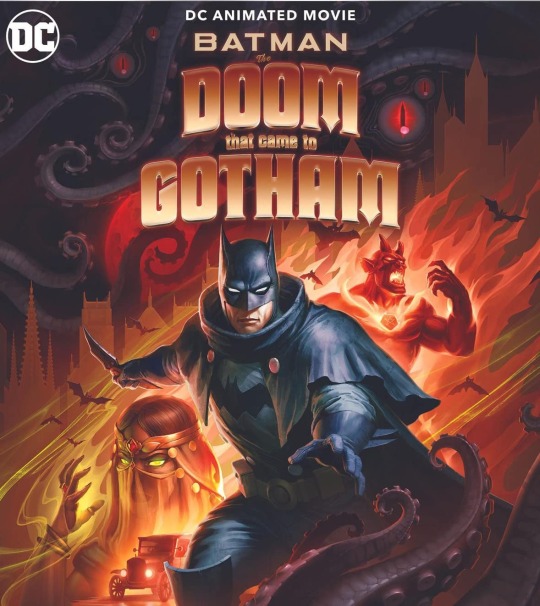
#Batman: The Doom That Came to Gotham#David Giuntoli#Tati Gabrielle#Christopher Gorham#Christopher Berkeley#Sam Liu#2023
3 notes
·
View notes
Text

Title: Batman: The Doom That Came to Gotham
Rating: PG-13
Director: Sam Liu, Christopher Berkeley
Cast: David Giuntoli, Patrick Fabian, Tati Gabrielle, John DiMaggio, Karan Brar, Navid Negahban, Darin De Paul, Emily O'Brien, Christopher Gorham, David Dastmalchian, Tim Russ, Matthew Waterson, Jeffrey Combs, William Salyers, Gideon Adlon, Jason Marsden
Release year: 2023
Genres: action, mystery, fantasy, horror
Blurb: Explorer Bruce Wayne accidentally unleashes an ancient evil, and must return to Gotham after being away for two decades. There, Batman battles Lovecraftian supernatural forces and encounters allies and enemies such as Green Arrow, Ra's al Ghul, Mr. Freeze, Killer Croc, Two-Face, and James Gordon.
#batman the doom that came to gotham#pg13#sam liu#christopher berkeley#david giuntoli#patrick fabian#tati gabrielle#john dimaggio#karan brar#2023#action#mystery#fantasy#horror
1 note
·
View note
Text

what if they all do group therapy together
#ghost and pals#the distortionist#christopher pierre#communications case 1#frances elsner#communications case 3#simon berkeley#candle queen#ghost and pals novocaine#trash dentist#blood tw#this is not the greatest drawing ive ever made but whatever#pierrotique art#simon is flipping off christopher because he hates gay people
152 notes
·
View notes
Text



Lee Vogt’s SONG OF THE WEEK: “Take Me In Your Arms” https://leevogt.bandcamp.com/track/take-me-in-your-arms —For fans of toe-tapping “yacht rock” with bursts of vocal harmonies. On a cosmic jukebox this would play between 10cc, Little River Band, and Pablo Cruise. Lee says, “These lyrics touch on the swirling feelings of love and union-- making one out of two.” Producer-musician Johnny J. Blair wrote, “I’ve had a great time working with Lee, a singer-songwriter who dashes off heartfelt love songs and is influenced by the confessionals of Leonard Cohen, Randy Newman, Nilsson, and John Stewart.”
#10cc #leonardcohen #randynewman #nilsson #johnstewart #yachtrock #softrock #littleriverband #pablocruise #christophercross #berkeley #california #alameda #singersongwriter #leevogt #jimhelman #johnnyjblair #marilynmonroe #vocalharmony #arms #love #union
#johnny j blair#singer songwriter#music#pop rock#san francisco#10cc#Leonard Cohen#Randy Newman#Nilsson#John Stewart#yacht rock#soft rock#Little River Band#Pablo Cruise#Christopher Cross#Berkeley#California#Alameda#Lee Vogt#Jim Helman#love#Bandcamp
3 notes
·
View notes
Text
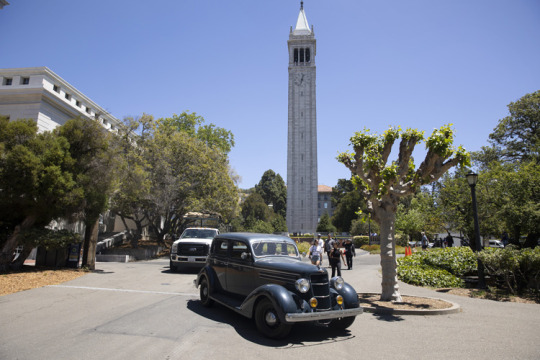
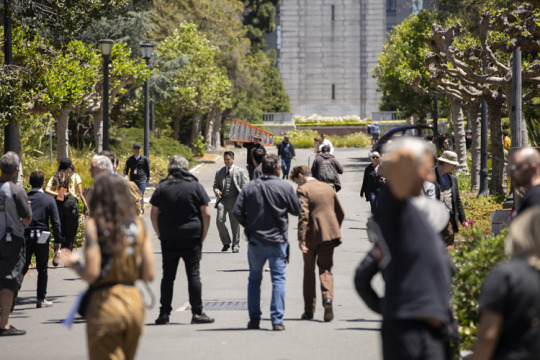
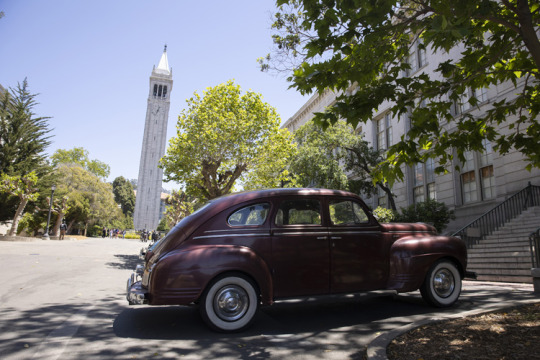
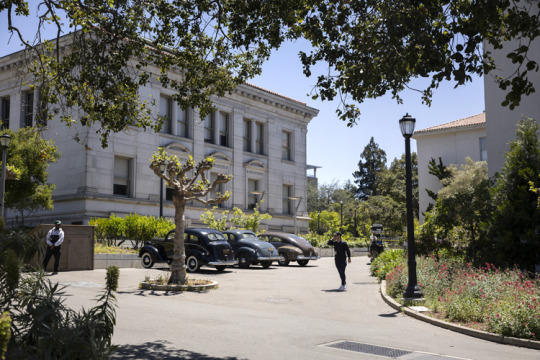
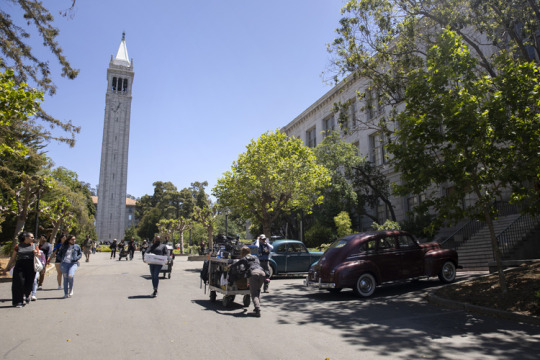
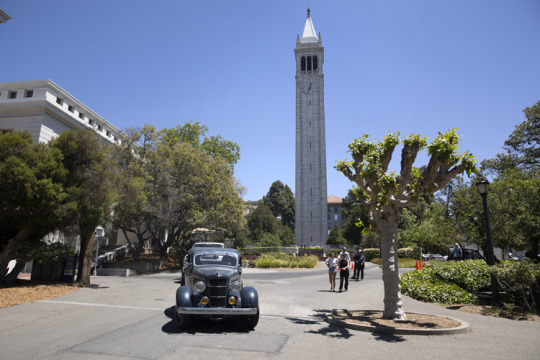
Throwback to when Christopher Nolan’s Oppenheimer was filmed on the UC Berkeley campus. (Photos by Brittany Hosea-Small)
Learn more.
#berkeley#engineering#science#uc berkeley#university#bay area#campanile#oppenheimer#oppenheimer 2023#barbenheimer#christopher nolan
3 notes
·
View notes
Text
!!!!!
i had such a great time working on this cOLLAB AAAAAAAAHHH!!!!
hope you all enjoyyyy ! :3
Tea Night! 🌹🃏

A collabed effort with @corpseflxwer and myself, we are excited to share it with you all! And just in time for the spooky season too..
We hope you enjoy our cover of the whacky tunes that come with it!
Which can be listened to right here!
Clear view of the background ^^

#ghost and pals#the distortionist#christopher pierre#lilia ghost and pals#funkin n pals#frankie creeps#kennith simmons#bri rodez#simon berkeley#christina rafflesia#benjamin callisto#friday night funkin#MAN did i love shading and lighting this one.... so happy with how it turned out#rtx on fr#and my mixing is improving yes yesss..#my art#tea night
65 notes
·
View notes
Text
'Oppenheimer, which was released on July 21, is winning the box office and people’s hearts. The biopic by Christopher Nolan about J Robert Oppenheimer, the father of the atomic bomb, has left people stunned. And it is no wonder that social media is filled with interesting posts related to the film. Among them is a tweet by Gašper Beguš that has left people amused. In his tweet, he shared how he accidentally walked into the set of the film during a shoot at the University of Berkeley.
“I was innocently walking on campus one day when I saw a bunch of cool cars and a few people dressed in 40s clothes. I thought a cool student group had a fashion show or something (Berkeley has awesome student groups). Until someone starts yelling at me that I should get out of the way. Turns out I was in the middle of the @OppenheimerFilm movie scene,” he shared. He concluded his post by sharing a picture of the set.
The post was shared some two days ago. Since being tweeted, it has accumulated more than 5.3 million views, and the numbers are still increasing. Additionally, it has gathered tons of comments from people.
Here’s how Twitter users reacted to the professor’s Oppenheimer-related post:
“I was wondering if they shot the movie at the universities they said they were at. That’s so cool!” shared a Twitter user. “They posted casting calls for extras on Craigslist here in Santa Fe. I regret not responding!” posted another. To which, Beguš replied, “Maybe if I wore more vintage clothes, the director wouldn't have noticed me and I'd be in the movie today!” A third added, “Something similar happened to me many years ago at UBC, except they asked ‘Are you an extra?’ Long story short, I am in an Al Pacino film.” A fourth commented, “I had similar experiences when they filmed a Transformer sequel in Downtown Detroit. Also, I walked through the set of the Harold and Kumar xmas movie completely unaware until I saw cameras.” A fifth wrote, “Cool, you should have asked to be an extra.”'
0 notes
Note
Alright, I’ll bite. Devil’s Minion in both the book and the show feels very connected to the AIDS crisis… but I’ve only ever acquired knowledge about that period through osmosis, so I’m curious if you have any thoughts/connections or information. 👀
I put out a call for people to ask me fandom-related queer history questions since I know a lot! I want to remind people this is open and that I welcome any fandom questions about queer history!
Ok this is going to get long because I have a lot of feelings on this topic especially. For those who just want some resources, further reading, and my sources, you can find those at the end. I'll pepper some links in, but I'll try to put the bulk of it there. But Daniel Molloy in the show especially is a man heavily impacted by the history of the AIDS crisis and I have a lot to say about that. I'm also assuming a knowledge of what HIV and AIDS are in the first place. You can do some quick reading here.
First, a note on the books since I mostly want to talk about the show. Queen of the Damned was published in 1988 when the AIDS crisis was in full swing. The peak of deaths was in 1993, but 1988 wasn't exactly early in it. The previous year saw the start of the AIDS memorial quilt, the founding of ACT UP (we'll talk about them later 💜), and Princess Diana publicly shaking the hand of an HIV positive patient. The shadow is cast over the culture, Anne Rice was not immune to the zeitgeist. Hell, she was living in the Castro district at the time and that is a notably queer area. (Her son Christopher talks about that briefly here.) I don't this the parallels are an accident. Armand is a man watching his lover slowly waste away while he can do nothing about it. Sure, it isn't AIDS, it's the alcohol and lack of care to his body. Sure, Armand could turn him. But despite their fun and their arguments being such a focus, that helplessness and fear permeates their relationship in the Devil's Minion chapter. Like so many gay men at the time, Daniel is wasting away. Armand is tormented by this. That is one of the most prominent faces of queer men at this time!
Daniel in the show has more going on in relation to the crisis.
I'll start by saying this in case it needs asserted, Daniel is a leftist journalist. And I don't mean in a casual liberal way. He's clearly passionate and involved and these things matter to him. He makes flippant and offensive comments in the interview sure, but I'm not saying he's perfect. His books give this away. He wrote about environmental issues in Under the Burning Sky, the prison industrial complex in The United States of Prison and Profit, and seemingly the surveillance state in Homelandia and likely in his book on Snowden. I'd also like to gesture to his work with "the barb". The Berkeley Barb was a leftist underground student paper. I'd recommend taking a look at their archives linked here and their website to get a grasp for what he was writing with at the time. (Warning, the archives are often NSFW). But in short the barb's attitude was largely anti-war, sex-positive, fuck the establishment kind of writing. He was already like this when he ran into Louis in '73. This will inform our view of him moving forward and will be our framework for understanding how he interfaced with the AIDS crisis.

I think it's important to note Daniel's proximity to AIDS too. I mean, subtextually, he had a brush with it when Louis nearly killed him in '73. Louis was a silent killer sweeping through the queer men of San Fran. Gay men were likely seeing lovers and friends disappear after going home with a stranger. Risky sex and drug use leading to a death going unacknowledged, one that's largely impacting gay men? I think the subtext of it is queer-- I mean clear. (Louis is not an all around metaphor for AIDS, but the ties between it and vampirism in the series seem clear, and in this instance the connection is there specifically for Louis, no one come for my ass).
Speaking of, the proximity is there in his behaviors too. He's a drug user who goes home with random men. (Casual sex was a big part of gay culture back then, see the hanky code and cruising for this.) Both of these actions put him at high risk of contracting HIV and put him among populations more likely to contract it. He was using heroin, and needle sharing is a huge risk factor in the spread of bloodborne illnesses, which can lead to the spread of HIV (which is why needle exchanges are so important.)
Finally for incidental proximity early on, Daniel was living in San Francisco. We know he frequented Polynesian Mary's at least, and possibly other gay bars. He also likely lived near or in the Haight-Ashbury neighborhood (given his memoir being called Hate and Ashbury). This area is very notably queer, historically. By 1990 HIV was the leading cause of death for young men in San Francisco at 61%. That's frighteningly high, and sure this was much later, but San Francisco was an epicenter.
AIDS was first identified in 1981 as a spread of Karposi Sarcoma and PCP (or "gay pneumonia" colloquially) in gay men in areas like New York, Los Angeles, and San Francisco. The first KS patient to go public (Bobbi Campbell) was in San Fran. He later wrote the first pamphlet on "safer sex". The first KS clinic was opened here, and later the first dedicated AIDS clinic (which Daniel seems to have written an article about according to his LinkedIn). By 1982 this epidemic was known as GRID, or Gay Related Immuno-Deficiency. (Interesting parallel that s1 notes Daniel as having an auto-immune disease, which Parkinson's is not primarily known as...). Daniel was covering these early years. His book A Shadow on the Skin was about this! It was a collection of articles he wrote on KS in the early years as he documented it becoming the AIDS crisis! He was routinely writing about the early epidemic. (s/o to @cbrownjc for this post where I found the blurb on the back of the book).

So, while living in San Francisco, this deeply politically involved young man was watching the early crisis unfold. He saw gay men dying slowly. Some gay men at the time described watching the AIDS crisis sweep through as watching their cities become ghost towns. This was something terrifying, something haunting, and something attributed largely to queer men. I mean, it was called GRID until 1982/1983. It wasn't until Ryan White, a 13 year old boy, contracted HIV from a blood transfusion in 1984 that people began seeing it as anything but just a gay disease. Even then, public perception didn't change quickly. It was so heavily associated with gay men, even, that getting national medical authorities to recognize women could contract it and treat it in women was a struggle.
All of this horror was occurring and the government ignored it. When they didn't ignore it? Ronald Reagan, then president, laughed at it. Hospitals were terrified of gay men, some refused to touch or treat AIDS patients. The FDA and CDC were slow to respond and to treat it.
In season one, Daniel is dismissive of his own queerness. He shrugs off his being in gay bars and hooking up with men, acts like it wasn't a big deal and it was just to score. I think this dismissive attitude likely stems from the AIDS crisis, at least in part. Lingering trauma from Louis' attack in '73 may play a role, after all, the body keeps the score. But I don't think we can overlook AIDS as a factor. The writers clearly didn't overlook it in his characterization, as exemplified above. I think they mean for this to impact who he is and how we view him! He watched some of the most terrifying years in recent queer history, of course he would downplay his queerness, of course he would marry two women even if he wasn't happy with them. (Not denying he may be bisexual, but he's certainly closeted.) And in the end, despite distance from his queerness, he still ended up having to waste away slowly from a disease with no cure, just uncomfortable treatments, much like men in the early AIDS crisis. (Early AIDS treatments were all trial based, you were lucky if you got in. You were lucky if you didn't end up in the control group. But the gamble was all you had, and those were the lucky ones. Even then it may not work, it was a trial for a reason. It wasn't until 1987 that AZT was approved to treat AIDS. It wasn't until the mid-90's, years later, that AIDS was considered survivable. I can't help but see his levadopa and how it only slows the inevitable as a parallel to this. A terrible reflection of earlier fears. Parkinson's has no cure. He'll deteriorate until he succumbs, even with medicine. He's lucky if it improves his quality of life, if it doesn't just make him more miserable. He'd be lucky to get a few more years.)
If Devil's Minion happened in the past, Armand watched his lover engage in high risk activities, while clearly aware of the risk given his coverage of AIDS. He watched Daniel writing a book worth of articles on KS and AIDS clinics. He knew how horrifying it was, he knew Daniel knew, and he watched his lover play with fire by using heroin anyway. And in the end? He still watched Daniel deteriorate slowly with medicine that only slowed it more.
If Devil's Minion is only coming and wasn't in the past at all? I think the impact of AIDS mostly falls to Daniel. After being turned he embraces life so fully. Yes, because he was dying before. But his style feels more queer once again. He doesn't have to fear any human diseases! He can fuck men! He can be gay! The shadow that hung over his youthful queer exploration, that interrupted it, is gone for him. And now he doesn't feel it's too late for him, I imagine. I mean, before he didn't have many peers, so many his age died. But now he's a vampire, he's outside of this. He can fuck young men, vampires, whatever. He's now outside of society whether he likes it or not, he's the "other", in for a penny in for a pound, right? And I think that's all going to impact who he is as a character going forward now too.
If there's interest in a Part 2 on the impact of AIDS activism in New York, since Daniel likely saw a lot of it up close, I'll gladly write it. I have opinions and info to share.
For now, stay safe everyone. I love you. And here's some further reading.
~~~~~~~~
A timeline of HIV and AIDS (1981-2024)
Only Your Calamity: The Beginnings of Activism by and for People With AIDS
HIV Infection as Leading Cause of Death Among Young Adults in US Cities and States (1993, about 1990)
On the impacts of the AIDS crisis on gay culture
The Queer significance of San Francisco
1 2 3 4 5 6
AIDS Memorial Quilt
Princess Diana's AIDS Advocacy
About the Berkeley Barb
How Ryan White impacted the view of AIDS
Daniel Molloy's LinkedIn
Practicum Page
#interview with the vampire#the vampire chronicles#danmand#devils minion#armandaniel#daniel molloy#aids crisis#aids#queer history#anne rice#emil.txt
166 notes
·
View notes
Text
My Headcanons For Contestants Full Names
Drop yours too if you want!
1st OG Gen
Eva Charlotte Ariti
Owen Grant Bennet
Alejandro Leónel Burromuerto
Katelynn Samaira "Katie" Caridade
Courtney Paloma Cicada-Sadri
Tyler Finnegan Damon
Lashawna Zarina Davis
Lindsey Tia Galilea
Laurencia Inez "Izzy" Happernook
Cody Emmett Jameson-Anderson
Duncan Roy Jeremy
Justin Vincent Kanani
Sadie Karissa Kress
Bridgette Ellis Leasom
Ezekiel Caspian Mallory
Harold Norbert Cheever Doris McGrady V
Gwenaëlle Eloise "Gwen" Oleander
Heather Serina Saimei
Devin Joseph "DJ" Setal
Noah Danial Simamora
Beth Leanne Tremblay
Trent Corbin Verlice
Geoffrey Matthew "Geoff" Vesely
Sierra Chassidy Weber
.
2nd OG Gen
Horrance Scott "Scott" Campbell
Zoella Jacklyn "Zoey" Chancer
Dawn Guinevere Galene
Samuel Addison "Sam" Gallagher
Rudolph Lawrence "Lightning" Jackson
Beverly Dale "B" Kavi
Brick Gabriel McArthur
Dakota Elodie Blaire Milton
Annette Maria "Anne-Maria" Ricci
Eustacia Holland "Staci" Smith
Josephina Briella "Jo" Sutton
Michelangelo Gian "Mike" Testa
Cameron Corderoy Wilkins
.
3rd OG Gen
Sky Catiana Ahenakew
Bernard Tobias "Beardo" Awan
Ashleigh Desiree "Sugar" Berkeley
Rodney Edmund Canyon
David Zachary "Dave" Dhiren
Shawn Fletcher Earnest
Eleanora Emi "Ella" Hikari
Maximus Cain "Max" Mayhem II (I have reasons I promise)
Christopher Marlon "Topher" Lancaster
Leonard Griffin Lawal
Amanda Adele "Amy" Parker
Samantha Saoirse "Samey" Parker
Jasmine Cordelia Powell
Scarlett Jane Sutherland-Pól
.
I took Sky's last name off this Reddit post

.
1st Reboot Gen
Caleb Malcom Ambrosia
Rajesh Aveer "Raj" Ankola
Wayne Remington Côte
Alejandra Isabel "Axel" Espinoza-Moreno
Chase Bradley Gol
Millie Francesca Ikenna
Beauregard David "Bowie" Jackson
Lauren Fawn "Scary Girl" Janina
Damien Josiah Kamara
Mary-Kate "MK" Kasem
Reginald Philip "Ripper" Kensington
Nichelle Simone LaDonna
Priya Faiza Patil
Hezekias Rafael "Zee" Perdomo-Pineda
Emmeline Nicola "Emma" Rancourt
Julianna Fiore "Julia" Winther
.
6 notes
·
View notes
Text

Walter Plunkett was an award winning costume designer, perhaps best known for for his work on “Gone with the Wind” (1939). In 1951, he was one of three credited designers on “American in Paris” (1951). His contribution was for Beaux Arts Ball sequence in the film. The three designers shared the Academy Award at the 24th Oscar ceremony in 1952.
As a young man, Plunkett studied law at University of California at Berkeley, but he discovered his true passion - acting. In 1923, his father bought him a ticket to New York and encouraged him to give Broadway a try.
Although Plunkett was cast in several productions, he found greater success in costume design. He was encouraged by friend and fellow designer Howard Greer to go to Hollywood, where Greer was already ensconced.
Many of the costume designers for the major studios were gay. Hollywood gave Plunkett the opportunity to openly live life as a gay man. Friend Don Bacardy (partner to Christopher Isherwood) once said of him:
“I'd say Walter Plunkett was very at ease with who he was.”
In the 1940 U.S. Census, Plunkett identified his then lover as another member of his household, Hal Richardson, as his “partner.”
Satch LaValley, another close friend described how Plunkett would put up bail for gay men arrested for cruising Pershing Square or Griffith Park.
"He'd often post bail for boys who were arrested. He didn't even have to known them. That was just part of his nature. He'd hear of some boy's story and go down and try to help."
After his retirement in 1966, Plunkett lived in Santa Monica with his longtime companion Lee.
In an era with no gay rights and the idea of gay marriage unthinkable, Plunkett made plans to ensure Lee would inherit his estate after he passed… he adopted Lee as his son.
Plunkett died in 1982 at the age of 79.




#gay icons#Walter Plunkett#Hollywood#costume designer#Oscar winner#gone with the wind#American in Paris#don bacardy#gay marriage#before gay rights
21 notes
·
View notes
Text

Bibliography
Aston, T.H. and C.H.E. Philpin, The Brenner Debate. Cambridge: Cambridge UP 1987.
Braudel, Fernand. Civilization and Capitalism. Berkeley: University of California Press, 1992.
British and Foreign Anti-Slavery Society. Anti-Slavery Reporter. March, 1883 III, 1
Chase-Dunn, CK, and Christopher Hall. Rise and Demise: Comparing World Systems. Boulder, CO: Westview Press. 1997.
Cooper, Jerrold S. “Virginity in Ancient Mesopotamia” Sex and Gender in the Ancient Near East 1(2002): 91–112.
Deakin, Simon. “The Contract of Employment: A Study in Legal Evolution.” Historical Studies in Industrial Relations. Issues 11–12 (2001). 15.
Ellis, David, Stanley Engerman, and Keith R. Bradley, Cambridge World History of Slavery Vol. 4. Cambridge: Cambridge UP. 2011.
Evans-Pritchard. “An Alternative Term for ‘Brideprice.’ Man 31:36–39.
Ekholm, K. and Jonathan Friedman. “‘Capital’ Imperialism and Exploitation in Ancient World Systems” Review 4 (1) (summer) (1982): 87–109.
Goody, Jack, and John Rankine Goody. Production and Reproduction. Cambridge: Cambridge UP, 1976, 1991.
Goody, Jack and Stanley J. Tambiah. Bridewealth and Dowry. Cambridge: Cambridge UP, 1973.
Graeber, David. Debt: The First 5000 Years. London: Melville House, 2011.
Ibrahim, Muhammad ibn. (1688) The Ship of Suleiman. Routledge and Kegan Paul. 1972.
Kussmaul, Ann. “Servants in Husbandry in Early Modern England.” Journal of Economic History 39(1) (March 1979):329–331.
Kussmaul, Ann, Robert Fogel, Stephan Therstom. Servants in Husbandry in Early Modern England. Cambridge: Cambridge UP, 1981.
Muldrew, Craig. “Credit and the Courts” Economic History Review New Series 46 (1) (Feb. 1993): 23–38.
Oxford English Dictionary. Oxford UP.
Pateman, Carole. The Sexual Contract. Cambridge, UK: Polity Press, 1988.
Reid, Anthony. Slavery, Bondage, and Dependency in Southeast Asia. New York: St. Martin’s Press. 1983.
——— Southeast Asia in the Age of Commerce 1450–1680: Expansion and Crisis. Vol. 1: Lands below Winds. New Haven, Yale University Press. 1988.
Rickett, W. Allyn. Guanzi: Political, Economic, and Philosophical Essays from Early China. Princeton UP, 1998.
Sage Handbook of Industrial Relations.
Scott, James C. The Moral Economy of the Peasant. DeGruyter, 1977. (maybe)
Stol, Marten. “Women in Mesopotamia” Journal of Economy and Society in the History of the Orient 38(2): 123–44.
Sweezy, Paul Marlor and Maurice Dobb. “The Transition from Feudalism to Capitalism.” Science and Society 1950, 1954.
Tambiah, Stanley J. “Bridewealth and Dowry Revisited: The Position of Women in Sub-Saharan Africa and Northern India.” Current Anthropology 30 (4)(1989): 413–435.
Watson, James. “Transactions in People” in Asian and African Systems of Slavery. CUP, 1980: 223–250.
#bibliography#book lists#capitalism#commodification#debt#marriage#money#slavery#wage labor#Wage Slavery#anarchism#anarchy#anarchist society#practical anarchy#practical anarchism#resistance#autonomy#revolution#communism#anti capitalist#anti capitalism#late stage capitalism#daily posts#libraries#leftism#social issues#anarchy works#anarchist library#survival#freedom
5 notes
·
View notes
Text

Christopher Paul Gardner (February 9, 1954) is a businessman and motivational speaker. He struggled with homelessness while raising a toddler son. He became a stockbroker and founded his brokerage firm Gardner Rich & Co (1987). In 2006, he sold his minority stake in the firm and published a memoir. That book was made into the motion picture The Pursuit of Happyness.
He was born in Milwaukee to Thomas Turner and Bettye Jean Gardner. He was the second child and the only boy born to Bettye Jean. He decided to enlist in the Navy. He was stationed at Camp Lejeune, where he was assigned as a hospital corpsman. He became acquainted with a decorated San Francisco cardiac surgeon, who offered him a position assisting him with innovative clinical research at the UC Medical Center and Veterans Administration Hospital in San Francisco. He moved to San Francisco upon his discharge from the Navy.
He married Sherry Dyson (1977-85) a Virginia native and an educational expert in mathematics. His son was born in 1981. His daughter was born in 1985, both by his girlfriend. His position as a research lab assistant was not enough for him to support a live-in girlfriend and a child. He quit and took a job as a medical equipment salesman.
He worked to become a top trainee at Dean Witter Reynolds. In 1982, he passed his Series 7 Exam on the first try and became a full employee of the firm. He was recruited by Bear Stearns & Company in San Francisco.
He accepted sole custody of his child. He and his son secretly struggled with homelessness while he saved money for a rental house in Berkeley. None of his co-workers knew they were homeless in the Tenderloin District of San Francisco for nearly a year. He scrambled to place his child in daycare, stood in soup kitchens, and slept wherever they could find safety, in his office after hours, at flophouses, motels, parks, airports, on public transport, and even in a locked bathroom at a BART station.
He is a philanthropist who sponsors many charitable organizations, primarily the Cara Program and the Glide Memorial United Methodist Church, where he and his son received needed shelter. #africanhistory365 #africanexcellence
3 notes
·
View notes
Note
Did Henry Tudor meet Elizabeth of Edward IV of England and York in house of york?
Hello, I'm not sure I understand your question. Are you asking if Henry Tudor ever met Edward IV and Elizabeth of York whilst Edward was still king? It's impossible to know, but there might actually be a possibility that Henry met Edward IV (less likely he met Elizabeth imo). To be clear, this is a personal theory based on some of the testimonies given for Henry and Elizabeth's marriage dispensation in 1486.
William, earl of Nottingham (64 years old): 'says that he has known the aforesaid prince Henry well for twenty years and more, and the said lady Elizabeth for sixteen years' => That means he knew Henry since at least 1466, and Elizabeth since 1470/1.
Sir Richard Croft (54 years old): 'says and answers that he has known king Henry well for twenty years, and the said lady Elizabeth for sixteen years' => Again, that means he knew Henry since at least 1466 and Elizabeth since 1470/1.
Sir William Tyler (43 years old): 'says that he has known prince Henry [now king] well for twenty years, and the lady Elizabeth for twelve years' => That means he knew Henry since at least 1466 and Elizabeth since 1470/1.
Those two dates are relevant to the Yorkist establishment (hold this thought). I think it's possible those three men first met Elizabeth of York as she fled with her mother and siblings in 1470 to the Tower and then to Westminster Abbey, or they might have met her in 1471 when Edward IV returned and rescued his family from sanctuary. I don't know exactly what kind of ceremonies were held after Edward's triumph over the Lancastrians but it's possible Elizabeth was present on those occasions.
Some of the other witnesses said they knew Henry for sixteen/fifteen years as well — specifically Christopher Urswyck (Margaret Beaufort's confessor) and Sir William Knyvett. It would make the most sense for the majority of people to say they knew Henry since 1470/1, considering Henry Tudor came to London during the readeption of his uncle Henry VI, and would have met the courtiers at that time. But those three people* — the Earl of Nottingham, Sir Richard Croft and Sir William Tyler — said they knew Henry at least since 1466. What was Henry Tudor doing in 1466?
At that time Henry was a 9 year-old in the custody of William Herbert, an important representative of the Yorkist king in Wales described as 'King Edward's master-lock'. It's possible William Berkeley (later Earl of Nottingham), Sir Richard Croft and William Tyler all knew Henry from visiting the Herberts in Rhaglan Castle**, though it's impossible to say if they had any degree of personal friendship with the Herberts. In 1466 there was however an event that was of importance for both the Herberts and Edward IV.
In that year William Herbert married his eldest son and heir to Mary Woodville, the king's sister (in-law) in a ceremony that took place in Windsor Castle, one of the king's residences. It was apparently such a great event a Welsh poet later praised it in one of his poems dedicated to Willaim Herbert:
The foremost king of Britain and its realm / Gave his sister to him / He held a great wedding-feast in Windsor / For this man, in his royalty / A generous feast for our lord who is of our tongue, / May he be seen again as a prince!
This is pure speculation but I ask myself: is it possible William Herbert took his whole family to Windsor, including his ward Henry Tudor, for his son's wedding feast? If so, many Yorkist partisans such as the Earl of Nottingham and Sir Richard Croft would have had the opportunity to meet Henry on that occasion — in turn, Henry would have had the opportunity to at least see King Edward. Of course there's no way to really know that whilst no concrete evidence comes up, but it's fascinating to think Henry might have seen/know Edward IV.
This isn't taking into account, for example, the possibility that Edward IV might have visited William Herbert at Raglan in one of his travels, to which Henry would have seen him as well. A royal visit to Raglan is the only way I can think of that Henry might have seen Elizabeth of York, as she was only merely a few months-old at the time of her aunt's wedding in Windsor, and would not have attended the ceremony. Furthermore, if Henry and Elizabeth had been present on the same occasion/wedding the three witnesses above would have given the same number of years for knowing them both***, which was not the case.
However, I think a royal visit from Edward IV to Raglan is less likely, given it was not documented anywhere, not even in Welsh poetry, and William Herbert was enough of a patron to have this visit documented in that way. So all in all, I think it's very unlikely Henry Tudor ever met Elizabeth of York before 1485, though I think there's a slight chance that he have met Edward IV in 1466. Again, this is all pure speculation, though.
_____________
* It's important to notice that all three were Yorkist partisans: Sir Richard Croft fought at Mortimer’s Cross, Towton and Tewkesbury on Edward IV's side — he and his brother were tutored with or were the one who tutored Edward whilst Earl of March and his brother Edmund in Ludlow*. Apparently the letter Edward and Edmund jointly wrote to their father Richard of York complained about Sir Richard Croft and his brother. The Crofts were neighbours of the Mortimers, which then encompassed Richard of York and his sons. The Battle of Mortimer's Cross took place on Croft soil. Sir Richard's wife Eleanor ran the household of Edward Prince of Wales, Edward IV's son, and his younger brother (also called Richard Croft) was one of Edward's tutors in Ludlow. Henry VII later made Sir Richard Croft his treasurer, and also made him Prince Arthur’s steward in Ludlow later on.
William Berkeley was created Baron Berkeley by Edward IV and became one of his privy councillors in 1482/3. He might have been the same William Berkeley, knight of the Body, who was attainted in Richard III’s Parliament and joined Henry in exile. It would be weird for the act in Parliament not to mention his title, though, since he was created Earl of Nottingham two days after Richard III was declared king. Either William Earl of Nottingham or this other William Berkeley, knight of the Body, hosted Margaret of York when she visited England in 1480.
** It would be really awkward if William Berkeley (later Earl of Nottingham) was intimate enough to visit the Herberts, considering he killed in battle William Herbert's son-in-law, Thomas Talbot, 2nd Baron/Viscount Lisle (Margaret Herbert's husband) after Lisle challenged him to a trial of arms over the Berkeley lands in 1470. Lisle had been Herbert's ward in the same way Henry Tudor had been. His wife Margaret Herbert miscarried a boy shortly after his death. I believe this is the dowager Viscountess of Lisle that Henry granted a financial settlement in 1492.
*** For example, Sir William Knyvett said he knew Elizabeth of York from the day of her birth 🥺 (and had known Henry for fifteen years, that is, since 1470/1 the Readeption years).
23 notes
·
View notes
Text

David Lodge
Booker prize-nominated author and critic who was known for his Catholic novels and satires on academic life
David Lodge, who has died aged 89, was, like his close friend Malcolm Bradbury, a professor of English literature who became even better known as a novelist. The two men occupied adjacent offices for some years at Birmingham University in the early 1960s and greatly influenced each other. Both were grammar school boys from non-academic backgrounds who became leading figures in English letters without ever darkening the gateways of Oxford or Cambridge universities. Both wrote novels in part out of an instinct to reach a wide constituency of readers with literary tastes.
Lodge worked briefly for the British Council before getting his first academic job in 1960, as a lecturer in English literature at Birmingham. In the same year his first novel, The Picturegoers, was published. This and the novel that followed, Ginger, You’re Barmy (1962), were written under the influence of Graham Greene, a fellow doubting Roman Catholic novelist whom the young Lodge much admired. Lodge’s own PhD, The Catholic Novel from the Oxford Movement to the Present Day, had examined the genre to which he himself began to contribute.
The protagonist of The British Museum Is Falling Down (1965), Adam Appleby, agonises over the rights and wrongs of contraception, and Lodge’s early fiction was clearly rooted in his own scruples and discontents. The novel was also notable for its gift of literary parody: Adam is researching for an English literature PhD and sections of the novel mimic the styles of leading 20th-century novelists. This dexterity was as characteristic a feature of its author as the religious questioning. The subject matter of this and most of his subsequent novels was drawn from his close knowledge of literary academia, and its follies.
David was the only child of a dance-band musician and sometime singer, William Lodge, and was brought up in Brockley, south-east London. His mother, Rosalie, was a Roman Catholic and he was educated at St Joseph’s academy, a Catholic grammar school in Blackheath run by a religious order, the De La Salle Brothers. He went to University College London to read English – he said that he was put off applying to Oxbridge by the impression of it he received from reading novelists such as Evelyn Waugh. From 1955 until 1957 he did national service in the Royal Armoured Corps. The experience would later be used in Ginger, You’re Barmy, which gives a jaundiced picture of army life. He then returned to UCL as a postgraduate.
When he was 24 and still studying for his PhD, Lodge married Mary Jacob, a fellow Catholic, whom he met while both were English undergraduates. Soon the couple had two sons and a daughter. (He would look back with something like amazement at their conviction that they should use only the methods of birth control approved by the church.) The third of their children, Christopher, had Down’s syndrome. He lived at home until he was in his 20s, and his care and education were a central commitment of family life. Lodge was later to raise funds and campaign on behalf of sheltered communities for adults with learning difficulties.
Two formative periods in the US – at the Harkness Commonwealth Fellowship (1964-65), then as a visiting professor at the University of California, Berkeley, in 1969 – animated both Lodge’s academic studies and his fiction. He turned to the campus novel, a genre in which he became a household name. Changing Places (1975) featured Philip Swallow, a bumbling, middle-aged English literature lecturer who is liberated, sexually and intellectually, by an academic exchange with a dynamic American professor, Morris Zapp. As well as exchanging jobs, the two men take up with each other’s wives. Zapp, based on Lodge’s friend Stanley Fish, became his best loved character. The novel won the Hawthornden prize and his widest readership to date.
It was followed by the playfully allusive Small World (1984), which continued Swallow’s and Zapp’s misadventures, and then Nice Work (1988), whose two main characters, a feminist academic and a bluff businessman, enacted the clash between two worlds. Inevitably, they also have an affair. These last two novels were both shortlisted for the Booker prize.
The main location for Lodge’s campus novels was the University of Rummidge, a scarcely disguised version of the University of Birmingham, where he continued to work. The novels reflected the academic fashions of the period, of which he was a slightly hesitant leader. His early criticism, such as his Language of Fiction (1966), showed him applying the close reading techniques of the “new criticism” to classic fiction. This first book was widely read by students and he was soon established as a leading academic analyst of classic fiction.
In the late 1970s, like other literary academics of his generation, he was stirred by the arrival of literary theory in British universities, and his own critical writings changed in response. The first symptom of his new interest was his collection Working With Structuralism (1981). His Modern Criticism and Theory: A Reader (1988) would become a standard anthology for students. He was a pioneer in making the sometimes arcane vocabulary of narratologists accessible to the general reader.
He had a special liking for the work of the Russian theorist Mikhail Bakhtin, whose delight in the novel’s subversive clash of different voices and viewpoints clearly appealed to him. By the mid-80s, however, Lodge’s interest in such theory had waned, and he was later to decide that it was a movement that had exhausted itself.
Thanks to the success of his fiction, by 1984 he was working only part-time as an academic, and in 1987 he retired from his post at Birmingham, though he continued to live in the city for the rest of his life and was made an honorary professor of his old university (and later emeritus professor). He was to admit that his use in his fiction of his observations from his professional life sometimes made colleagues, and therefore himself, uneasy. He remained a critic, however, as well as a novelist. For two years his column in the Independent on Sunday exemplified, for the general reader, the usefulness of particular items of critical vocabulary. Selections were collected in The Art of Fiction (1992).
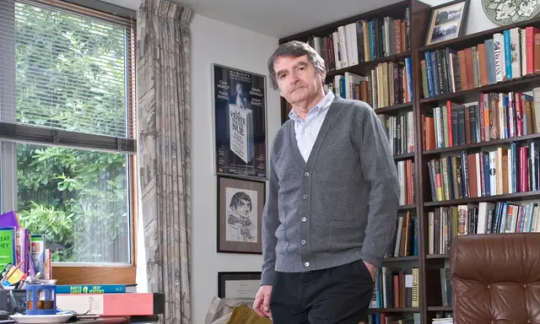
His campus novels had taken him away from the Catholic themes that he had still been exploring in How Far Can You Go? (1980), which was the Whitbread book of the year. (In this novel Lodge gives one of his leading characters his own experience of having a child with Down’s syndrome.) Paradise News (1991) returned to the territory of religious dogma and doubt, and seemed to announce Lodge’s inexorable move away from religious certainty: its protagonist only achieves contentment by conquering his Catholic hang-ups.
Yet, Lodge’s fiction was not exactly becoming more secular: both Therapy (1995) and Thinks ... (2001) have leading characters on whom Catholicism still has its hold. Lodge had come to describe himself as an interested observer of Roman Catholicism, rather than an actual believer, but his fiction tells the story of a writer still fiercely engaged by Christian themes.
With academia behind him, he entered new territory as a writer. At the end of the 1980s he adapted Small World then Nice Work for television (the former for Granada, the latter for the BBC). He then adapted Charles Dickens’s Martin Chuzzlewit as a six-part BBC serial (1994). If Ulysses was his favourite novel, Dickens was probably his favourite novelist, and his involvement with this dramatisation seemed a logical fusing of his populism and his literariness. He also wrote three plays, including The Writing Game, staged at Birmingham Repertory theatre in 1990 and adapted for television.
His literary tastes were catholic (in the non-religious sense) at a time when literary academics were becoming more specialised. He wrote introductions to the works of authors ranging from Jane Austen and George Eliot to EM Forster and Patrick Hamilton. His critical generosity and sound judgment made him a natural choice to chair the Booker prize judges in 1989. He seems a quintessentially English proponent of a peculiarly English genre – the comic novel – but his work was widely translated. In France his popularity was marked when he was made a Chevalier de l’Ordre des Arts et des Lettres in 1997. In 1998 he was made a CBE.
Ever the trained critic, he was candid in his analysis of his own narrative, confessing that, as a novelist, he had used up much of his own experience by his 60s. His later novels remained literary, but were not necessarily rooted in what he called “phases of my own life”, like the novels that had gone before. So Author, Author (2004) dramatised a period in the life of Henry James, while A Man of Parts (2011) was based on the life of HG Wells. They were biographically impeccable, but made less of Lodge’s gift for comedy than earlier novels. The former suffered the misfortune of being published at the same time as Colm Toibín’s novel about Henry James, The Master. Lodge wrote a rueful account of the coincidence and its consequences in The Year of Henry James, or Timing Is All (2006).
In 2008 he published what was, in many ways, his most autobiographical novel, and one of his best, Deaf Sentence. Lodge had started losing his hearing in his mid-40s. Up to this point, only those closest to him had realised that his partial deafness had deeply influenced him. It contributed to his decision to retire from academia and turned him in on himself. Struggling to keep up with conversations, he said, had stopped him being amusing. Lodge often spoke of his feelings of anxiety, undiminished by literary success or academic standing. Yet the deafness that depressed him in life became comic in his novel.
Admirers of Lodge’s novels were often surprised to find him, in person, dolefully reflective. This was the spirit of his memoir, Quite a Good Time to Be Born, published in 2015. Covering the period from his birth to his breakthrough, at the age of 40, with Changing Places, it gives (despite the title) a glum and minutely circumstantial account of growing up a Roman Catholic in the 1940s and 50s.
Lodge looks back with some amazement at his younger self’s respect for Catholic doctrine. Two further volumes of memoirs, covering later periods of his life, followed. Writer’s Luck (2018), should have relished his middle years of celebrity and success, but is more precise about the small disappointments of his literary life. Varying Degrees of Success (2020), covering the years after academia, lets us know just how wearying the business of writing can be.
His last published work of fiction was The Man Who Wouldn’t Get Up (2016), a collection of short stories mostly composed between the 1950s and 90s. Humorously fable-like, they serve as a reminder of this melancholy man’s comic instinct. Fiction allowed him to combine his literary-critical intelligence with a gift for observing absurdities, in order to fashion his own peculiarly bleak brand of comedy.
Mary died in 2022. He is survived by their three children, Stephen, Christopher and Julia.
🔔 David John Lodge, writer and critic, born 28 January 1935; died 1 January 2025
Daily inspiration. Discover more photos at Just for Books…?
4 notes
·
View notes
Text




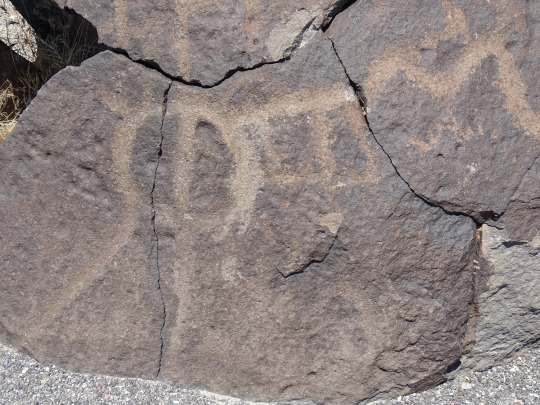

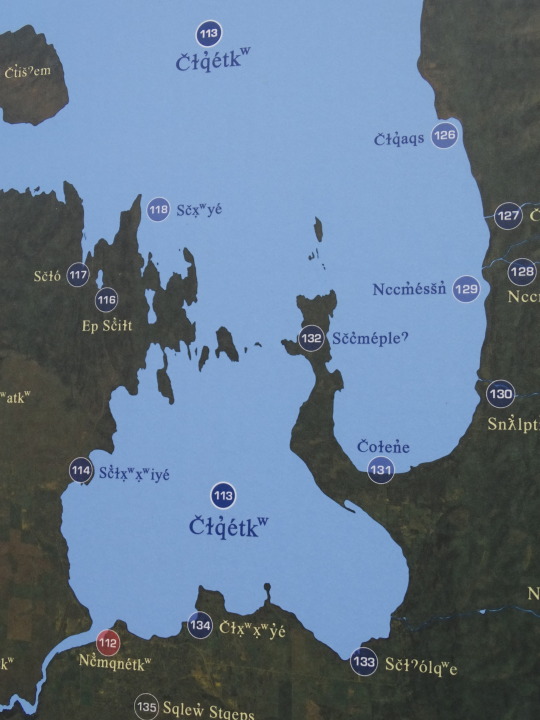

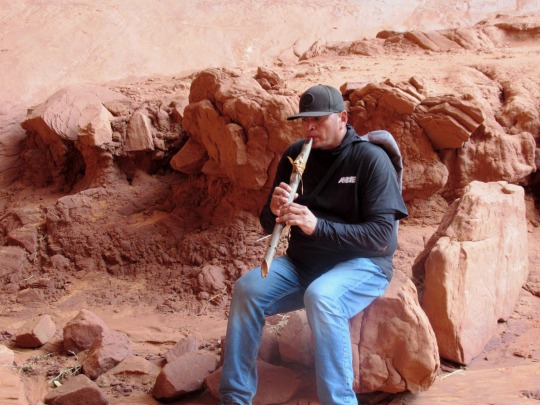
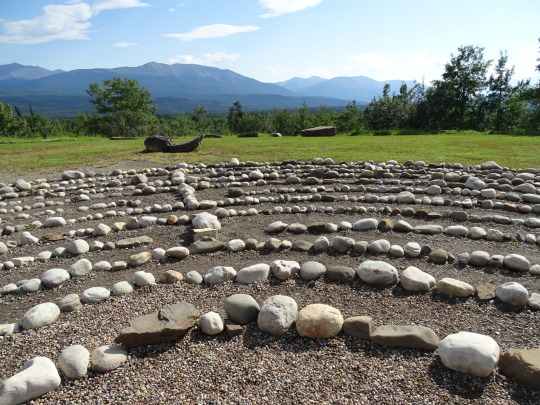










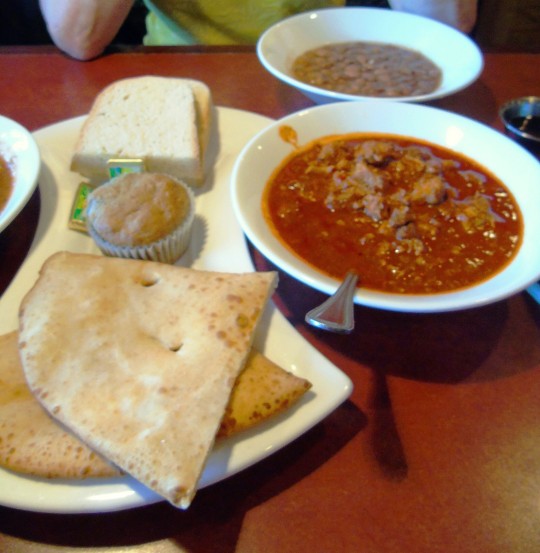



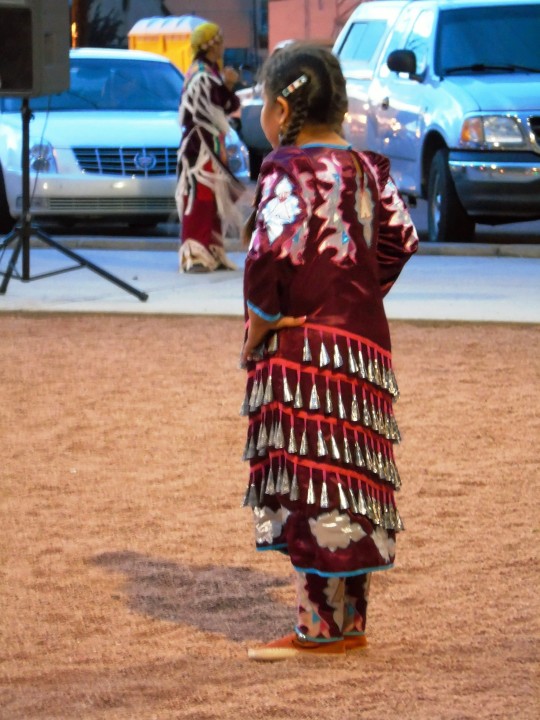


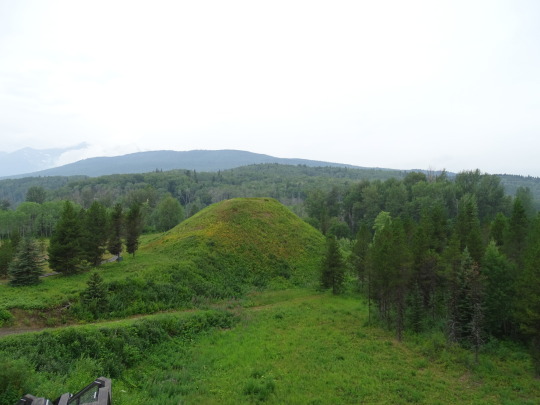

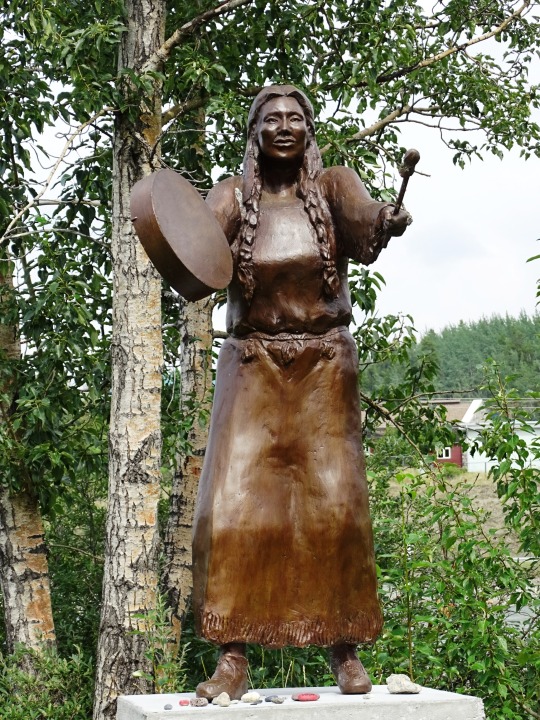
Indigenous Peoples’ Day/National Native American Day
Coming together to honor and learn from the rich heritage and wisdom of those who've lived on American soil for generations.
Appreciating and paying respect to the unique heritage and culture of those whose origins are native to the Americas, Indigenous Peoples’ Day offers the opportunity to honor, learn, celebrate and raise awareness.
History of Indigenous Peoples’ Day
Honoring Native American people throughout the United States, Indigenous Peoples’ Day was first officially celebrated in the US in 2021, when US President Joe Biden became the first president to formally recognize the day. However, the idea for the day goes back much further.
In 1977, the United Nations in Geneva, Switzerland sponsored the International Conference on Discrimination Against Indigenous Populations in the Americas. Part of the purpose was to begin celebrating Indigenous Peoples’ Day, particularly with the idea of replacing the adoration and glorification of Christopher Columbus with recognition and acknowledgement of the native peoples of the land.
Columbus Day, which is an American holiday, falls on the second Monday of October in the United States, has been less revered in recent years. This is likely due to the fact that the indigenous peoples of the time had their lands and lives taken away from them by the settlers from Europe, and the American people are becoming more aware of the way history has been written only from the perspective of the white person.
In exchange for Columbus Day, many people in the United States have begun the celebration of Indigenous Peoples Day instead. Coinciding with the 500th anniversary of the arrival of Christopher Columbus on American soil, a celebration of Indigenous Peoples’ Day was organized on October 12, 1992 in Berkeley, California. Many other cities and towns have accepted and implemented something similar in their communities, including places such as Los Angeles, California and Washington, DC.
At least twelve of the United States do not celebrate Columbus Day, and the state of South Dakota celebrates Native American Day instead. Tribal governments in Oklahoma have also made declarations regarding the celebration of Native American Day.
How to Celebrate Indigenous Peoples’ Day
A wide spectrum of ways for Americans to celebrate Indigenous Peoples’ Day can be discovered and created. Consider implementing some of these ideas in honor of the day, or come up with some of your own clever ideas:
Attend an Indigenous Peoples’ Day Event
Those who have a family history as a Native American or other indigenous people should certainly take this time to celebrate their heritage! And those who don’t can definitely take the opportunity to support and enjoy learning more.
For people who live in certain places where the populations of indigenous peoples groups are strong, like Arizona, California, Oklahoma, South Dakota and many other states, it is likely that some exciting events, educational programs and celebrations will be on the calendar! Join in on a parade, learn a native craft, or listen to a lecture on history.
Even better, brush up on current events of the indigenous peoples in the local area to see what ways it is possible to learn more about their plight, make a donation or even act as an advocate to raise awareness in the community.
Re-Learn United States History
With the recognition that history over the first 200 years of the United States was written from the perspective of the white person, perhaps National Indigenous Peoples’ Day would be a time, especially for white Americans, to consider a different perspective. Get beyond what was taught in school and get educated on how the story actually happened before the territory of what is now the United States was settled.
Read some books, watch some documentaries and do some research on websites to find out more. Consider some of these books for getting more educated:
An Indigenous Peoples’ History of the United States by Roxanne Dunbar-Ortiz
Lies My Teacher Told Me: Everything Your American History Book Got Wrong by James W. Loewen
The People: A History of Native America by R. David Edmunds
A True History of the United States: Indigenous Genocide, Radicalized Slavery, Hyper-Capitalism, Militarist Imperialism and Other Overlooked Aspects of American Exceptionalism by Daniel Sjursen
Support an Indigenous People Artist or Community
Often revered for their creativity and attention to detail, many indigenous people tribes produce artwork and handicrafts that are valuable and beautiful. Consider making a trip to a place that supports the arts of native peoples and make a purchase of pottery, blankets, jewelry, painting or some other amazing piece of art to add to your collection.
Visit an Indigenous Peoples’ Museum
Take the hands-on approach to learning more about the people who first inhabited the Americas by visiting a museum or exhibit dedicated to their culture and people. Try out one of these or visit one more local to the area:
Museum of Indigenous People (formerly the Smoki Museum). Located in Prescott, Arizona, this museum works to instill understanding and respect for the people of indigenous cultures, particularly those in the southwestern parts of the United States. The museum holds events, offers membership and even hosts a consignment market.
National Museum of the American Indian. This Smithsonian museum boasts two locations, one in the Washington DC mall and one in New York City. They offer access to various collections and exhibits as well as educational programs, online resources, and presentations with the intent to pay respect and honor to the native and indigenous peoples of the Americas.
Heard Museum. Situated in a vitally important place for Native Americans, this Phoenix, Arizona location focuses on the tribes and people of the Southwest. Exhibitions include handicrafts such as weaving and textiles as well as jewelry, clothing and more. Ages range from prehistoric to contemporary and everything in between. The Heard Museum is also the place where the World Hoop Dance Championship takes place each year!
The Eiteljorg Museum. Located in the center of Indianapolis, Indiana, this museum showcases paintings, sculptures, weaving, pottery, artifacts and even evidence of storytelling. With festivals, educational programs, events and even an annual Indian market, this museum is a fun one to visit and learn.
Source
#Yellowknife#Northwest Territories#Grimes Point Archaeological Area#original photography#tourist attraction#landscape#Canada#travel#vacation#cityscape#USA#second Monday in October#14 October 2024#Whitehorse#history#National Native American Day#Indigenous Peoples’ Day#IndigenousPeoplesDay#NativeAmericanDay#First Nations#landmark#survivors of Whitehorse Indian Mission School by Ken Anderson#Finding Peace Monument by Halain De Repentigny#The Gather-Ring by Manuel Báez and Charlynne Lafontaine#Monument Valley Navajo Tribal Park#Mesa Verde National Park#Jamestown S'Klallam Tribe#Wabanki Canoe#Ottawa#Wickiup
5 notes
·
View notes